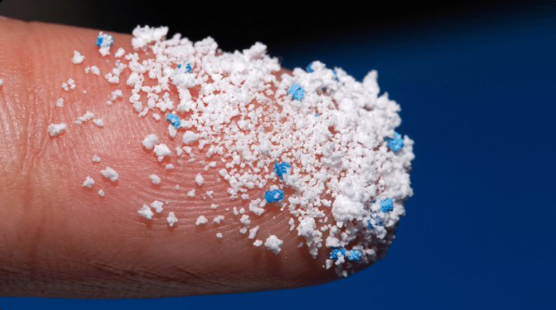Microplastics, which are tiny plastic particles less than 5mm in diameter, have been detected in various human organs, including the brain, lungs, liver, kidneys, reproductive organs, knee and elbow joints, blood vessels, and bone marrow. Researchers have noted that brain tissue appears to be one of the most contaminated, with studies showing up to 20 times more plastic in brain tissue than in other organs. The presence of microplastics in the brains of people with dementia was significantly higher than in those without the condition, suggesting potential links between microplastic exposure and neurological health issues Yale E360 and Peoplemag and SEJ
Microplastics are pervasive in the environment, infiltrating everything from our air and oceans to everyday foods and, now, even the human brain, according to recent research. These minute plastic particles, varying in size from 5 millimeters down to 1 nanometer, have become a ubiquitous presence, as noted by the Environmental Protection Agency.
Your brain is now 0.5% microplastics contamination for which no cure or disposal mechanism has ever evolved in the history of life on this planet pic.twitter.com/QLhm8WMbwE
— UAE Exotic Falconry & Finance𓅃 (@FalconryFinance) August 29, 2024
A study conducted between 2016 and 2024 in Albuquerque, New Mexico, analyzed autopsy samples to measure micro and nano plastics (MNPs) in human organs like the liver, kidneys, and notably, the brain. This research revealed that these plastics are not only prevalent but are accumulating over time. Particularly alarming was the finding that the brain’s frontal cortex—a critical area responsible for functions such as abstract thinking and creativity—contained higher concentrations of these plastics than other studied organs.
Matthew Campen, the study’s lead author from the University of New Mexico, highlighted a startling increase in the presence of plastics in the brain. He noted a 50% increase in microplastic concentration in brain tissue compared to levels in 2016, estimating that about 0.5% of the brain tissue’s weight could be attributed to these plastics.
Study finds 0.5% of human brains are microplastics.
Follow: @AFpost pic.twitter.com/tzS3l6Znki
— AF Post (@AFpost) August 21, 2024
The most commonly detected type of plastic was polyethylene, which is extensively used in various consumer products like packaging and toys. Despite the profound implications of these findings, the study has not yet undergone peer review and remains unpublished in academic journals.
The broader implications of microplastic pollution are still under investigation, with numerous studies uncovering their presence in various human tissues and even in the food chain. Researchers, including Dr. Britta Baechler from the Ocean Conservancy, emphasize the urgent need for action to mitigate this widespread contamination.
INVADING OUR BRAINS?🧠 Super small pieces of plastic are invading human brains, scientists say https://t.co/pBAVFbW6ap pic.twitter.com/JYvJ0perWO
— WFLA NEWS (@WFLA) September 1, 2024
While the extent of microplastic ingestion and inhalation by humans continues to be a topic of scientific debate, influenced by factors such as diet and geographic location, the potential health implications are concerning. In 2019, it was estimated by Australian researchers for the World Wildlife Fund that the average person might ingest approximately 5 grams of plastic weekly, akin to the weight of a credit card. Despite these findings, the World Health Organization in 2022 reported no definitive risk to human health from microplastics, pointing to the nascent state of research in this area. This ongoing study underscores the critical need for further investigation into the environmental and health impacts of microplastic pollution.
More
Matthew Campen, a lead researcher in one of the studies, highlighted the alarming levels of microplastics found in brain tissues, noting that their accumulation is consistent with the increasing presence of plastics in the environment. The amount of microplastics found in brain samples collected in 2024 was about 0.5% by weight, which represents a 50% increase from samples collected in 2016. This trend mirrors the rising levels of environmental microplastic pollution Yale E360 and Peoplemag
Major Points:
- Microplastics are ubiquitous in the environment, now found in human organs such as the brain, liver, and kidneys, with the highest concentrations observed in the brain.
- A study conducted in Albuquerque, New Mexico from 2016 to 2024 revealed increasing levels of micro and nano plastics in these organs over time.
- The most common type of microplastic found in the brain was polyethylene, a material widely used in consumer products like packaging and toys.
- Although research into the health impacts of microplastics is still developing, initial findings suggest their pervasive presence in both the environment and human body.
- The World Health Organization has stated that there is no clear risk to human health from microplastics based on current evidence, highlighting the need for continued research in this area.
Conner T – Reprinted with permission of Whatfinger News


